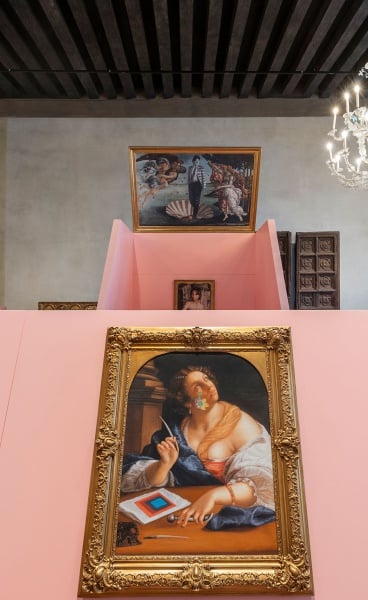Artist
Gego (Gertrude Goldschmidt)
About
Gego (Gertrud Goldschmidt) was born on August 1, 1912, to a liberal Jewish banking family in Hamburg, Germany. She studied under Paul Bonatz at the University at Stuttgart, where she graduated with an architecture and engineering degree in 1938.
Living Period
1912 - 1994
Nationality
German, Venezuelan
Gego (Gertrud Goldschmidt) was born on August 1, 1912, to a liberal Jewish banking family in Hamburg, Germany. She studied under Paul Bonatz at the University at Stuttgart, where she graduated with an architecture and engineering degree in 1938. As a student she was influenced by the innovations of the Bauhaus, a creative laboratory of design that operated for over two decades in pre-Hitler Germany. She was forced to leave Germany shortly after finishing her degree and immigrated to Venezuela in 1939. There she worked as a graphic designer and operated her own furniture workshop. She became a Venezuelan citizen in 1952 and lived there for the remainder of her life.
In 1953, Gego began to develop her artistic practice full-time. Encouraged by the support of Alejandro Otero and Jesús Rafael Soto, she began to create three-dimensional works in 1956. During these three years, Gego operated in the margins of the Venezuelan kinetic and op art movements, and continued to study mathematics, architecture, and philosophy. In 1957 Gego participated in the exhibition ‘Arte abstracto en Venezuela’ and by 1959 the Museum of Modern Art in New York had begun acquiring her work. She lived in New York briefly in 1960 and made several extended visits to the United States until 1967. In New York, she attended the Pratt Institute, where she took engraving and printmaking classes. She also worked in the Tamarind Lithography Workshop in Los Angeles before returning to Venezuela in 1967. For most of her career, she worked at a home studio in Caracas, creating a prolific and varied oeuvre consisting of sculptures and works on paper. She died in Caracas on September 17, 1994.
Source: Dominique Lévy.




